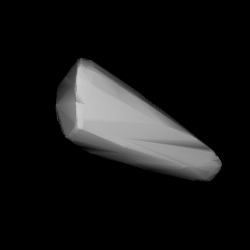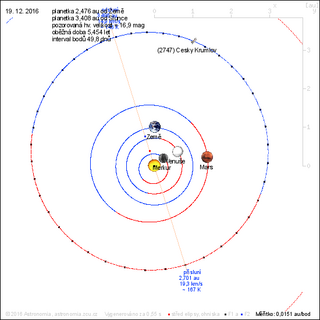
2747 Český Krumlov, provisional designation 1980 DW, is a carbonaceous asteroid and slow rotator from the outer regions of the asteroid belt, approximately 22 kilometers in diameter. It was discovered by Czech astronomer Antonín Mrkos at Kleť Observatory on 19 February 1980, and named for the Czech town of Český Krumlov.

1743 Schmidt, provisional designation 4109 P-L, is a dark background asteroid from the inner regions of the asteroid belt, approximately 19 kilometers in diameter. It was discovered during the Palomar–Leiden survey on 24 September 1960, by astronomers Ingrid and Cornelis van Houten at Leiden, on photographic plates taken by Tom Gehrels at Palomar Observatory in California. The C-type asteroid has a rotation period of 17.5 hours. It was named for the optician Bernhard Schmidt.
2009 Voloshina, provisional designation 1968 UL, is a carbonaceous asteroid from the outer regions of the asteroid belt, approximately 27 kilometers in diameter.
1764 Cogshall, provisional designation 1953 VM1, is a carbonaceous Themistian asteroid from the outer regions of the asteroid belt, approximately 26 kilometers in diameter. It was discovered on 7 November 1953 by astronomers of the Indiana Asteroid Program at Goethe Link Observatory in Indiana, United States. The asteroid was named after Wilbur Cogshall, professor of astronomy at Indiana University.
1027 Aesculapia, provisional designation A923 YO11, is a Themistian asteroid from the outer region of the asteroid belt, approximately 33 kilometers in diameter.
1051 Merope is a dark Alauda asteroid from the outermost region of the asteroid belt, approximately 68 kilometers in diameter. It was discovered on 16 September 1925, by German astronomer Karl Reinmuth at the Heidelberg-Königstuhl State Observatory in Heidelberg, Germany, and given the provisional designation 1925 SA. Reinmuth named it after the nymph Merope from Greek mythology. The asteroid has a rotation period of 27.2 hours.
1093 Freda, provisional designation 1925 LA, is a carbonaceous asteroid from the outer regions of the asteroid belt's background population, approximately 110 kilometers in diameter. It was discovered on 15 June 1925, by astronomer Benjamin Jekhowsky at the Algiers Observatory in Algeria, North Africa. The asteroid was named after French engineer Fred Prévost.

1118 Hanskya is a large background asteroid, approximately 77 kilometers in diameter, located in the outer regions of the asteroid belt. Discovered by Sergey Belyavsky and Nikolaj Ivanov in 1927, it was named after Russian astronomer Aleksey Hansky. The presumed dark C-type asteroid has a rotation period of 15.6 hours.
1128 Astrid, provisional designation 1929 EB, is a carbonaceous Astridian asteroid from the central region of the asteroid belt. It is the parent body of the Astrid family and measures approximately 40 kilometers in diameter.
2906 Caltech, provisional designation 1983 AE2, is an asteroid from the outer region of the asteroid belt, approximately 56 kilometers in diameter. It was discovered on 13 January 1983 by American astronomer Carolyn Shoemaker at Palomar Observatory in the United States. It is named after the California Institute of Technology.
1470 Carla, provisional designation 1938 SD, is a carbonaceous asteroid from the outer regions of the asteroid belt, approximately 35 kilometers in diameter.
1194 Aletta, provisional designation 1931 JG, is a carbonaceous asteroid from the outer region of the asteroid belt, approximately 55 kilometers in diameter. It was discovered on 13 May 1931, by South African astronomer Cyril Jackson at Johannesburg Observatory in South Africa. It was later named after the discoverer's wife Aletta Jackson.
2054 Gawain, provisional designation 4097 P-L, is a dark and elongated asteroid from the outer regions of the asteroid belt, approximately 19 kilometers in diameter. Discovered during the Palomar–Leiden survey at Palomar Observatory in 1960, the asteroid was later named after Gawain, a knight of King Arthur's Round Table in the Arthurian legend.
1267 Geertruida, provisional designation 1930 HD, is a carbonaceous background asteroid from the inner regions of the asteroid belt, approximately 20 kilometers in diameter. Discovered by astronomer Hendrik van Gent at Johannesburg Observatory in 1930, the asteroid was later named after Geertruid Pels, sister of Dutch astronomer Gerrit Pels.

1337 Gerarda, provisional designation 1934 RA1, is a dark background asteroid from the outer regions of the asteroid belt, approximately 40 kilometers in diameter. It was discovered on 9 September 1934, by Dutch astronomer Hendrik van Gent at the Union Observatory in Johannesburg, South Africa. The asteroid was named after Gerarda Prins, the wife of an orbit computer at Leiden Observatory.
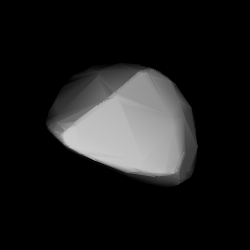
1540 Kevola, provisional designation 1938 WK, is a dark background asteroid from the outer regions of the asteroid belt, approximately 42 kilometers in diameter. It was discovered on 16 November 1938, by astronomer Liisi Oterma at the Iso-Heikkilä Observatory in Turku, Finland. The asteroid was named after the Finnish Kevola Observatory.
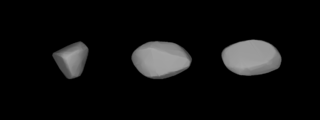
1930 Lucifer, provisional designation 1964 UA, is a carbonaceous asteroid from the outer regions of the asteroid belt, approximately 34 kilometers in diameter. It was discovered on 29 October 1964, by American astronomer Elizabeth Roemer at the Flagstaff station (NOFS) of the United States Naval Observatory (USNO). It is named after Lucifer, the "shining one" or "light-bearer" from the Hebrew Bible.
1690 Mayrhofer, provisional designation 1948 VB, is a carbonaceous asteroid from the outer region of the asteroid belt, approximately 32 kilometers in diameter. It was discovered on 8 November 1948, by French astronomer Marguerite Laugier at Nice Observatory in south-east France. It was later named after Austrian amateur astronomer Karl Mayrhofer.

1889 Pakhmutova, provisional designation 1968 BE, is a carbonaceous asteroid from the outer region of the asteroid belt, approximately 35 kilometers in diameter.
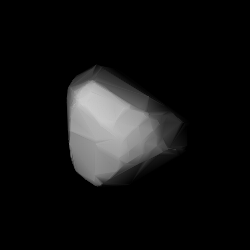
1537 Transylvania, provisional designation 1940 QA, is a carbonaceous asteroid and long-lost minor planet from the outer regions of the asteroid belt, approximately 17 kilometers in diameter. Discovered by Gyula Strommer in 1940, it was later named after region of Transylvania, where the discoverer was born.
